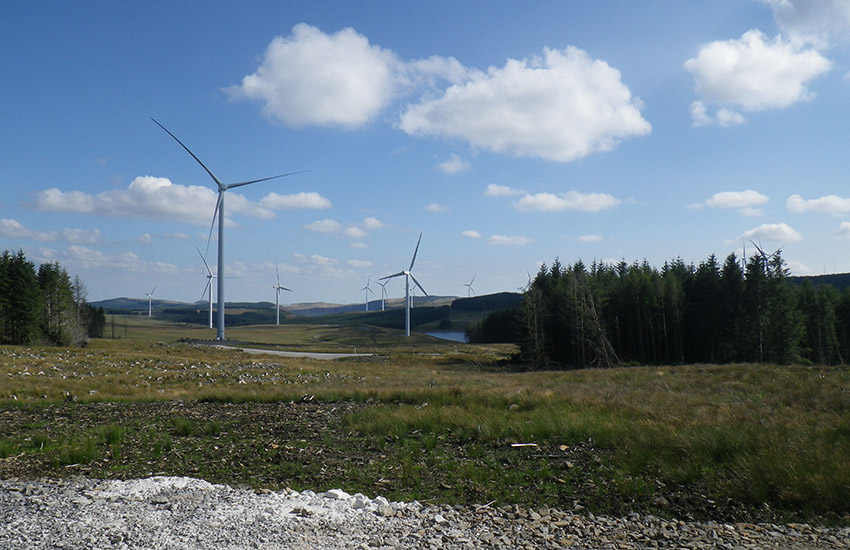Plans for a publicly owned energy company could see bills reduced and renewable supplies directly benefit communities, a minister has said.
The proposal is for a joint venture between the Welsh government and developers.
Profits would be used to construct wind turbine sites owned by communities.
Climate Change Minister Julie James says “it sticks in my craw” that foreign governments get profits from wind farms in Wales.
Ms James said communities would benefit from either owning turbines, getting homes fitted to save energy or from lower bills .
“This will be a company that brings more of the profits back to the people of Wales directly, in the form of a state developer, but we will have to do that in a joint venture partnership with a range of other providers,” she said.
At the moment, many big wind farms across Wales are foreign-owned, in some cases by other governments, with profits helping to fund their public services.
The biggest wind farm in Wales and England is at the heads of five valleys across south Wales.
Pen y Cymoedd, owned by Vattenfall, has 76 turbines that generate enough electricity for nearly 190,000 homes – one sixth of homes in Wales.
They also generate profits for the Swedish state, which owns Vattenfall, with profits going towards heating Swedish hospitals, schools and other public services.
Rahel Jones, from Vattenfall, said the company has spent £300m in Wales in the past eight years and was not put off by the Welsh government’s plans.
“Competition is good,” she said.
“We can all work together to deliver the energy system we need and tackle climate change.”
The aim is to stop all profits from renewable energy sites going overseas
A new wind farm is being developed between Port Talbot and Maesteg by the Irish government, owned by ESB and Coriolis, generating enough electricity for 100,000 homes.
Gwynt y Môr, the offshore wind farm in north Wales, is owned by RWE, based in Germany. It has also taken over Innogy Renewables which built Wales’ third largest wind farm near Brechfa, where there are 28 turbines.
Ms James said: “In the previous industrial revolution in Wales, the wealth of Wales were worked by its people, the profits were exported away. We need to make sure that doesn’t happen again.”
How would it work?
Under its proposals, the Welsh government would help a developer with access to land, planning process, infrastructure and negotiations with the National Grid.
The developer would bring in funding or venture capital – the money needed to get the project going, with the aim of having its investment returned when it makes profit.
There would be a package so that the community benefited directly, and profits would be shared, with the Welsh government using its share for another project.
However, Ms James added that “each joint venture will be developed differently, each site will have a different set of criteria”.
Julie James says the company will allow Wales to “exploit our own natural resources”
While there are existing community energy projects, the Welsh government said its proposals would include more community benefit and involvement.
“Some of the turbines will be directly owned by the community,” said Ms James.
She also wants “off-grid” communities who do not have oil or mains gas to get power directly from the turbines, if possible, making it cheaper, or energy efficiency improvements made to homes.
Dyfan Lewis from Community Energy Wales wants decisions about how the money is spent to be decided at a local level.
He said: “We want to see the money go to community initiatives, funding different social businesses or helping people in fuel poverty. They have the choice then of where to use that money and how to do it best”
Communities have been getting money from wind farms already – for people living near Pen y Cymoedd, there is an annual fund of £1.8m they can bid into.
Our Space, or Ein Lle Ni in Welsh, has had £81,500.
Sylvia Strand and Jonathan Gregory, film and television music composers from Treherbert, Rhondda Cynon Taf, are working with people to record their stories.
Ms Strand said the project was a way for “the people of this area to tell the history of this area, from the ice age to the present day, in their own words”.
Recording in various locations, they work with 10 community groups with participants ranging from eight to 98 years old with contributors including a woodland therapy group and choirs.

